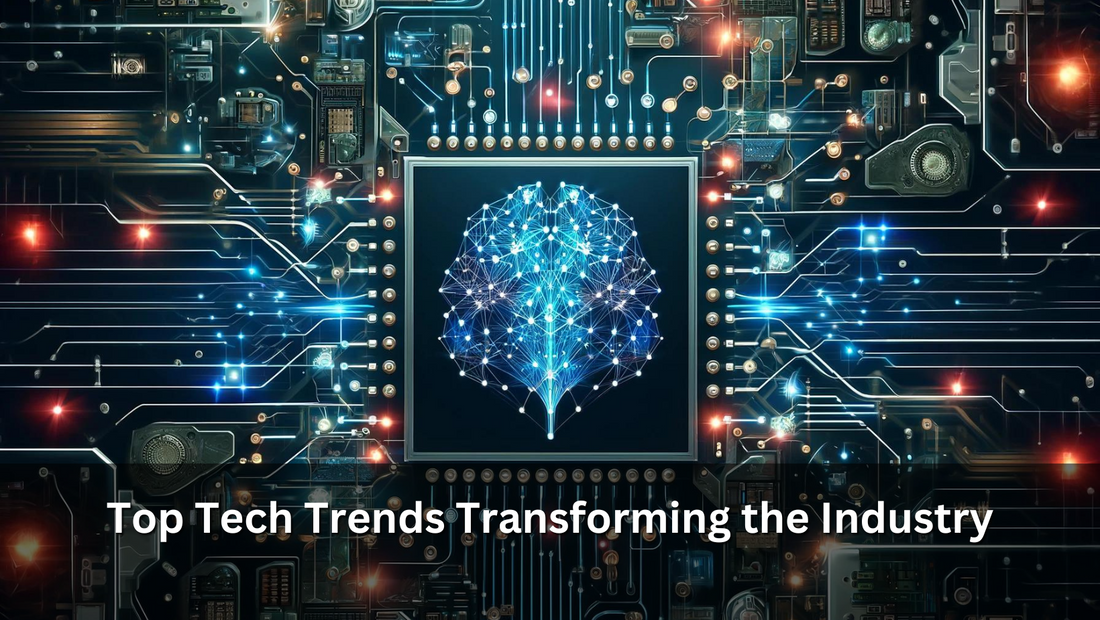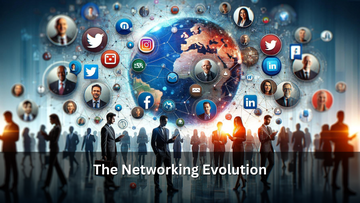Introduction
In 2024, the digital landscape continues to evolve at an unprecedented pace, driven by relentless innovation and growing demands for more sophisticated, secure, and scalable network infrastructures. As businesses and technologies adapt to this rapid evolution, several key networking trends have emerged as critical enablers of this transformation. This article explores the top five technology trends set to redefine networking in 2024, from AI-driven security enhancements to the revolutionary deployment of 5G networks. Each trend not only highlights the technological advancements but also illustrates the shifting paradigms in how data and services are delivered and secured across global networks.
AI-Driven Security Enhancements
Artificial intelligence (AI) is revolutionizing cybersecurity by enhancing threat detection capabilities and implementing proactive security measures. As networks expand and data volumes grow, AI's role becomes increasingly vital in identifying and neutralizing threats more efficiently than traditional methods. Machine learning algorithms are particularly adept at analyzing vast amounts of data quickly, allowing them to detect patterns that may indicate potential security breaches before they happen.
Furthermore, AI's ability to automate responses to emerging threats is transforming network security management. These automated systems can, for instance, isolate compromised network segments and apply necessary patches without human intervention, greatly accelerating the response time and minimizing potential damage. The integration of AI into cybersecurity protocols not only bolsters defense mechanisms but also ensures continuous network protection, making it an indispensable tool in the cybersecurity arsenal. This proactive approach supported by AI is setting new standards in securing digital assets and infrastructure against increasingly sophisticated cyber threats. For a detailed look at how enterprises are integrating AI tools and the subsequent risks, see the Zscaler report here.
SASE: Redefining Network Architecture
Secure Access Service Edge (SASE) is a transformative network architecture that seamlessly integrates networking and security services into a single, unified cloud-based service. This integration is crucial for supporting the dynamic secure access needs of modern enterprises, especially as more organizations adopt remote work and undergo digital transformations. SASE's framework combines various networking and security functions, including SD-WAN, secure web gateways, cloud access security brokers, and firewall as a service.
By centralizing these services, SASE not only simplifies the management of network and security infrastructures but also enhances scalability and flexibility. This is particularly beneficial for businesses with geographically dispersed operations, as it allows secure, efficient connectivity regardless of location. Moreover, SASE supports the zero-trust security model, ensuring that all resources are accessed securely, no matter where the users are connecting from. This capability is pivotal in an era where traditional network perimeters have dissolved, making SASE an essential component of modern network strategies.
The Expansion of Multi-Cloud Networks
Multi-cloud networking (MCN) is increasingly becoming a strategic choice for businesses looking to leverage the distinct advantages offered by different cloud platforms. This trend facilitates a more seamless management and integration of diverse cloud services, allowing companies to optimize their computing environments according to specific workloads, compliance requirements, and cost efficiencies. MCN effectively addresses the complexities of operating across multiple cloud environments by providing centralized control and management capabilities.
The operational efficiencies gained through MCN are significant. Organizations can avoid vendor lock-in, enhance disaster recovery strategies, and improve service availability by distributing resources across multiple clouds. Furthermore, MCN enhances flexibility, enabling businesses to rapidly scale resources up or down based on demand, and to implement the best-fit technology solutions from various cloud providers. This adaptability is crucial for staying competitive in a fast-evolving technological landscape, making MCN an essential element in modern enterprise IT strategies.
Advancements in Wi-Fi Technology
Wi-Fi technology continues to evolve rapidly, with the adoption of Wi-Fi 6E and the introduction of Wi-Fi 7 marking significant milestones in its development. Wi-Fi 6E extends into the 6 GHz band, providing more bandwidth, higher throughput, and less interference compared to earlier standards. This expansion allows for more robust and reliable connections that can support a larger number of devices simultaneously, a critical advantage given the increasing number of IoT devices in homes and businesses.
The rollout of Wi-Fi 7 is set to further enhance these capabilities by supporting even faster data rates and reducing latency to unprecedented levels. These improvements are designed to meet the growing demand for high-bandwidth applications such as virtual and augmented reality. The advancements in Wi-Fi technology not only boost the overall user experience by providing faster and more reliable connections but also enable new technological possibilities by supporting a broader range of connected devices more efficiently.
The 5G Revolution Continues
The expansion of 5G networks is setting new benchmarks for network speed, capacity, and the enablement of cutting-edge technologies. This ongoing revolution is dramatically enhancing the infrastructure necessary for the proliferation of IoT devices and the deployment of smart city applications. By providing significantly higher speeds and reduced latency, 5G networks facilitate real-time data transfer and processing, critical for applications such as autonomous vehicles, remote healthcare, and augmented reality experiences. These capabilities are not only transforming how devices connect and interact but are also unlocking a myriad of opportunities for innovation across various sectors.
Conclusion
s we look beyond 2024, the integration of advanced networking technologies will undoubtedly continue to play a pivotal role in shaping the future of digital communications and commerce. The trends discussed underscore a broader move towards more intelligent, efficient, and resilient network systems. Businesses poised to adopt and adapt to these trends will find themselves at a competitive advantage, with the ability to navigate the complexities of modern networking demands more effectively. Ultimately, the ongoing advancements in networking technology promise not only to enhance operational capabilities but also to drive forward the innovation that will underpin the next wave of digital transformation. For further insights into how AI is impacting cybersecurity, integral to these network technologies, visit Unite.AI’s discussion on 2024 cybersecurity AI trends.
We at NFC Tagify provide all sort of NFC Solutions or you may contact us: Tel. 01600800080, Email: info@nfctagify.com













